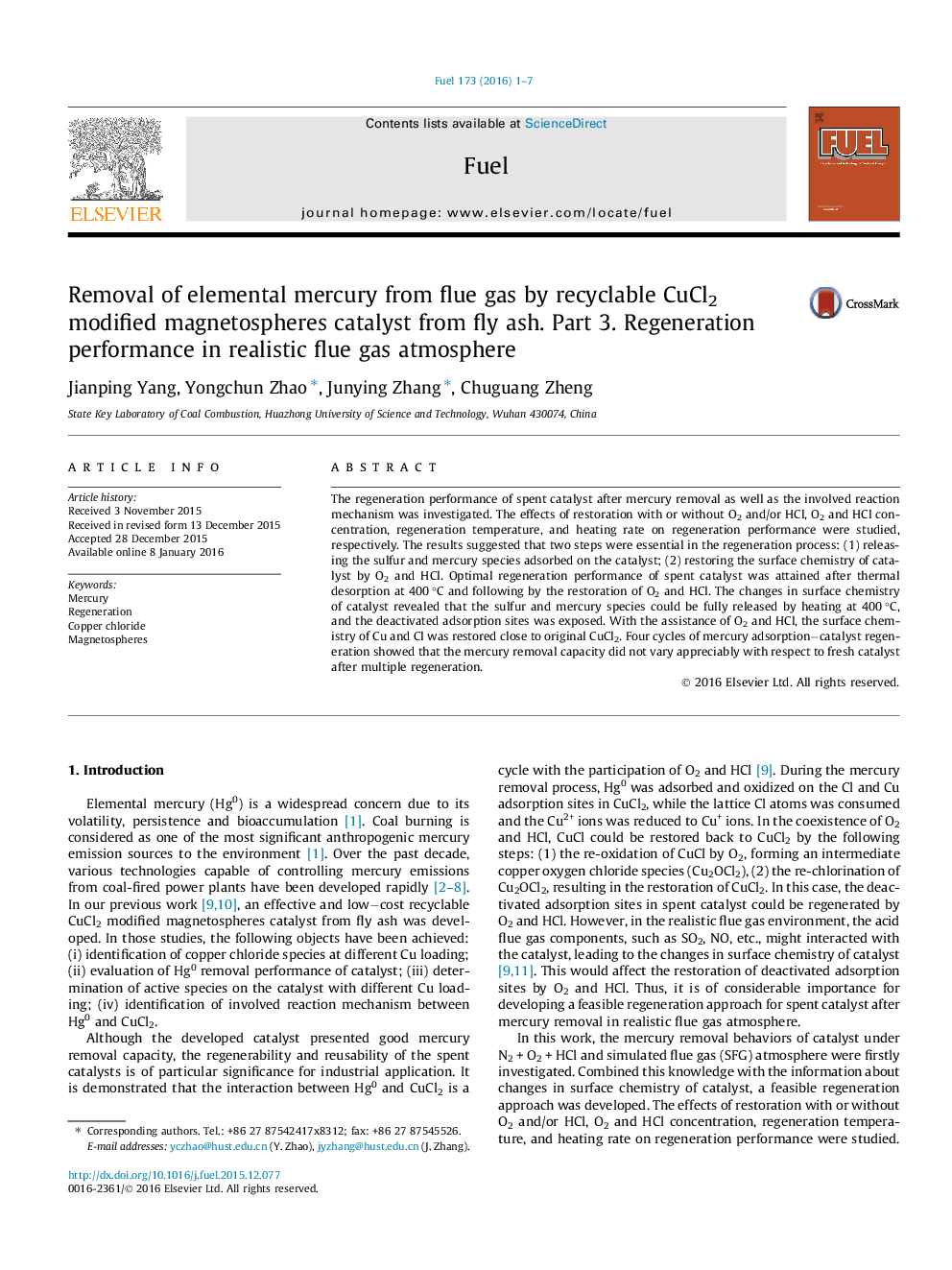| Article ID | Journal | Published Year | Pages | File Type |
|---|---|---|---|---|
| 205220 | Fuel | 2016 | 7 Pages |
The regeneration performance of spent catalyst after mercury removal as well as the involved reaction mechanism was investigated. The effects of restoration with or without O2 and/or HCl, O2 and HCl concentration, regeneration temperature, and heating rate on regeneration performance were studied, respectively. The results suggested that two steps were essential in the regeneration process: (1) releasing the sulfur and mercury species adsorbed on the catalyst; (2) restoring the surface chemistry of catalyst by O2 and HCl. Optimal regeneration performance of spent catalyst was attained after thermal desorption at 400 °C and following by the restoration of O2 and HCl. The changes in surface chemistry of catalyst revealed that the sulfur and mercury species could be fully released by heating at 400 °C, and the deactivated adsorption sites was exposed. With the assistance of O2 and HCl, the surface chemistry of Cu and Cl was restored close to original CuCl2. Four cycles of mercury adsorption−catalyst regeneration showed that the mercury removal capacity did not vary appreciably with respect to fresh catalyst after multiple regeneration.
